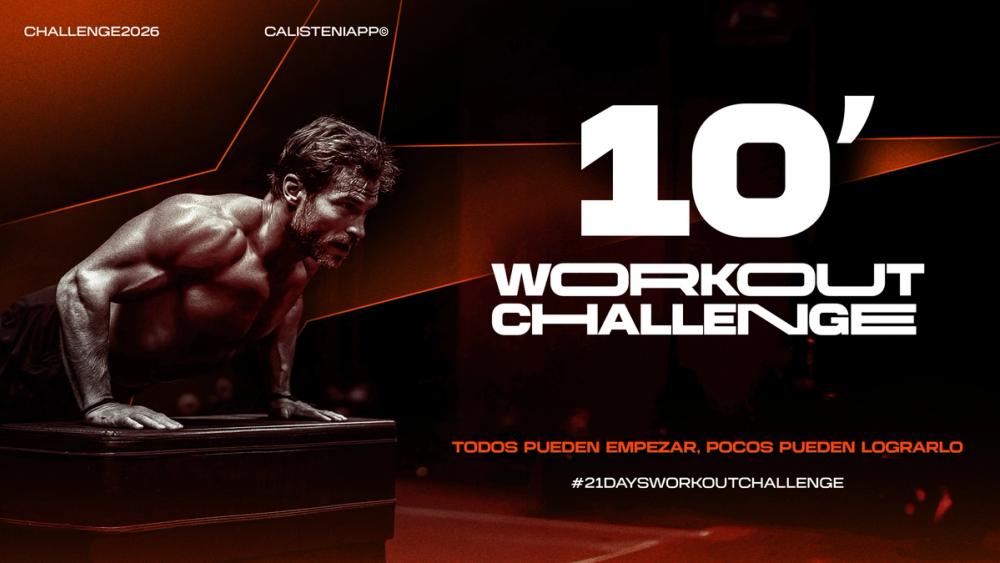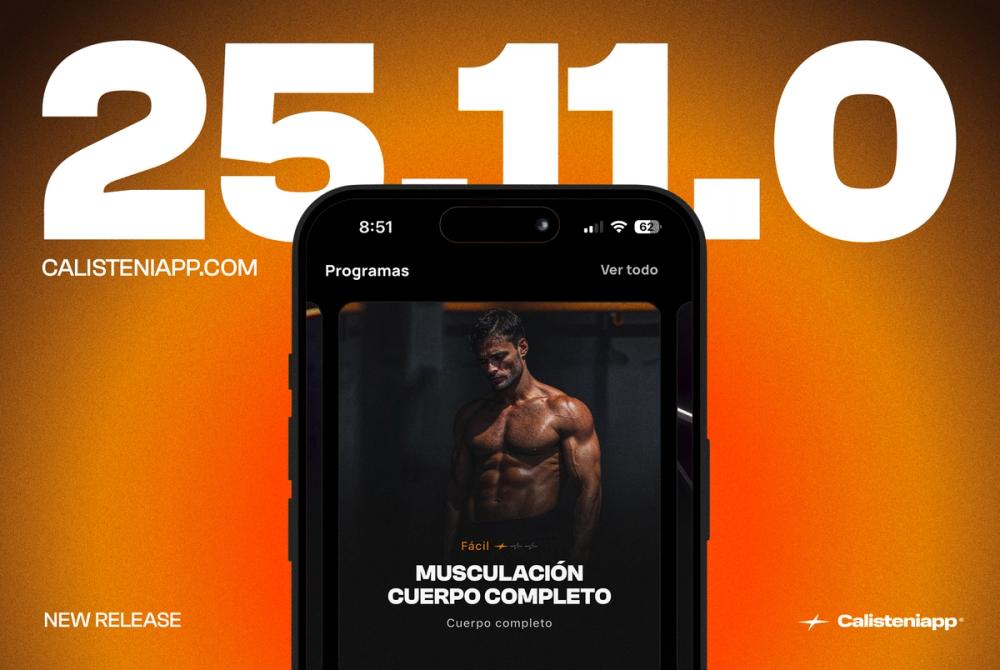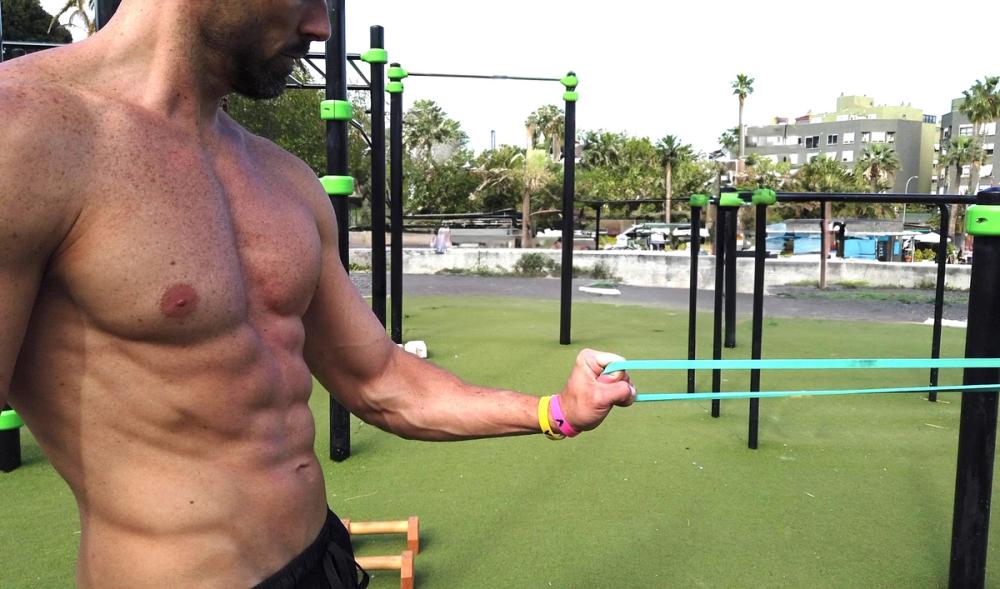
Calisteniapp 10' Workout Challenge
Start training or give your routines a boost with this 21-day Calisthenics challenge for all levels that will put your discipline to the test.

When I started practicing calisthenics over ten years ago, one of the things that fascinated me the most was the ability to not only stay fit and healthy but also to learn tricks and skills that presented a real challenge.
These tricks not only allowed me to showcase my strength and abilities but also kept me motivated to continue progressing, aiming to master even more difficult moves. Thanks to this, my training sessions became much more enjoyable, varied, and stimulating, constantly pushing me to improve.
Unfortunately, back then, there wasn’t much information available, so I had to teach myself. I experimented with different tricks I discovered in old Street Workout videos.

During this process, I realized that some movements, which looked simple, turned out to be much harder than expected, while others, which seemed incredibly complex and impressive, were surprisingly easy to execute.
In this article, I want to share some of these tricks that can be learned relatively quickly—even if you're a beginner. This way, right from the start of your calisthenics journey, you can practice exciting movements and build a repertoire that showcases your skills and progress, all while adhering to the core calisthenics values of strict form and proper technique. Let’s get started!

The planche is undoubtedly one of the most challenging elements in calisthenics. For a beginner to aim for a straddle or full planche in a short period might seem overly ambitious. However, there is a variation with a little trick that makes it much easier while still looking impressive.
In the pseudo planche, your body position mimics that of a full or straddle planche, but with a key variation: your elbows are bent, and most importantly, they rest against your torso.
This adjustment shifts the body’s weight from your shoulders, chest, and triceps to the bar or floor where the exercise is performed.
As a result, executing the pseudo planche correctly is more about finding the right positioning and balance than about strength.

How to Perform It:
Start by bending your arms and gradually leaning forward, ensuring your elbows press firmly against your torso. This helps transfer your weight. It might take a little practice to find the correct position, but with time, you’ll get it and perform this move effortlessly.
The frog stand is similar to the pseudo planche, but instead of resting your torso on your elbows, you rest the inner sides of your thighs.

How to Perform It:
Experiment with positioning until you find a comfortable stance. Then, gently lean forward until you reach a balance point.
Both the frog stand and pseudo planche require some pushing strength, but nothing too intense. If you can perform a few full-range push-ups, you’re ready to try these tricks.
Handstands are like planches—not ideal for beginners because they demand significant pushing strength and extensive practice with balance and technique. However, there’s a simplified version that we’ve discussed before: the three-point headstand.
This version minimizes the strength required and makes balance much easier to manage.

How to Perform It:
Placing your head on the ground creates a solid base, allowing you to master this trick with just a few minutes of practice. Once comfortable, you can even try adding variations and shapes.
For a more detailed explanation, you can find our guide here.
Advanced push-up variations are usually off-limits to beginners. However, there’s one that often sneaks into the "advanced" category but is surprisingly easy to learn: clap push-ups between the legs.

How to Perform It:
The key is timing and using your leg to assist the movement. Instead of relying solely on a powerful arm push, leverage your leg to lift yourself and execute the clap. With proper coordination, this trick becomes seamless, adding a flashy move to your arsenal.
Finally, we have a move that, while not suited for complete beginners, is much easier than it appears: the human flag.
The flag requires both pushing and pulling strength and is one of the most spectacular and visually striking moves for the general public.
However, those of us who have trained for years know it’s simpler than it looks—to the point where it’s no longer even scored in competitions.

Pro Tip:
It’s easier for individuals naturally stronger in pulling than pushing. But if you can perform pull-ups, dips, and push-ups with ease, you can likely achieve the flag within a few weeks or months of consistent training.
For a step-by-step guide, check out our EVO routine available on Calisteniapp here.
I hope these tricks inspire you to train, progress, and build a long, successful journey in calisthenics, achieving all your goals.
By Yerai Alonso

Yerai Alonso
Cofundador de Calisteniapp, referente en calistenia y el street workout en Español. Con más de una década de experiencia, es creador de uno de los canales de YouTube más influyentes del sector. Autor del libro La calle es tu gimnasio, campeón de Canarias y jurado en competiciones nacionales e internacionales.
Join our newsletter
Learn everything you need to know about calisthenics

Start training or give your routines a boost with this 21-day Calisthenics challenge for all levels that will put your discipline to the test.

Calisteniapp is a symbol that represents our obsession with excellence, our essence, and the path we want to define for the next ten years.

Descubre los mejores ejercicios de antebrazo para calistenia. Mejora fuerza, agarre y control corporal con entrenamientos efectivos sin pesas.
